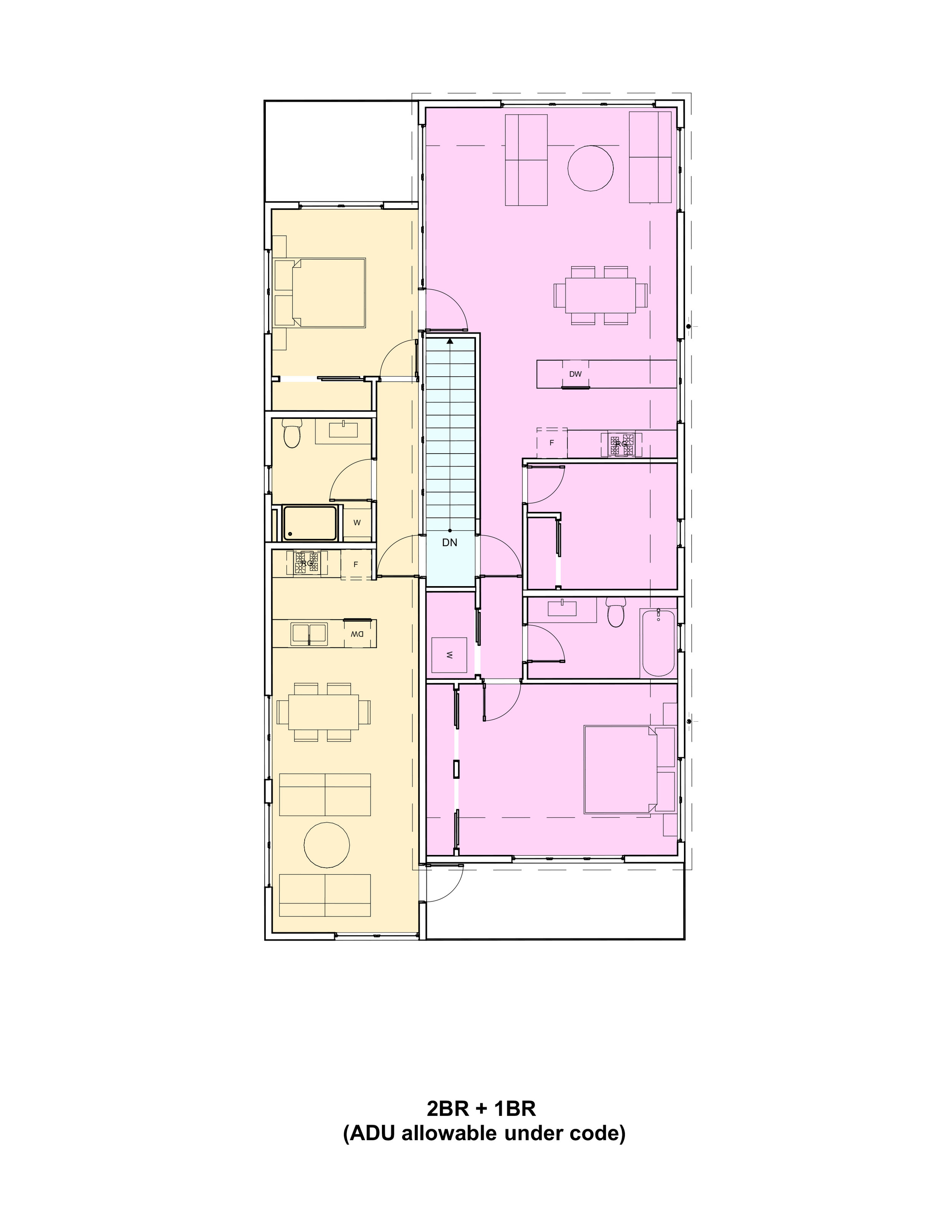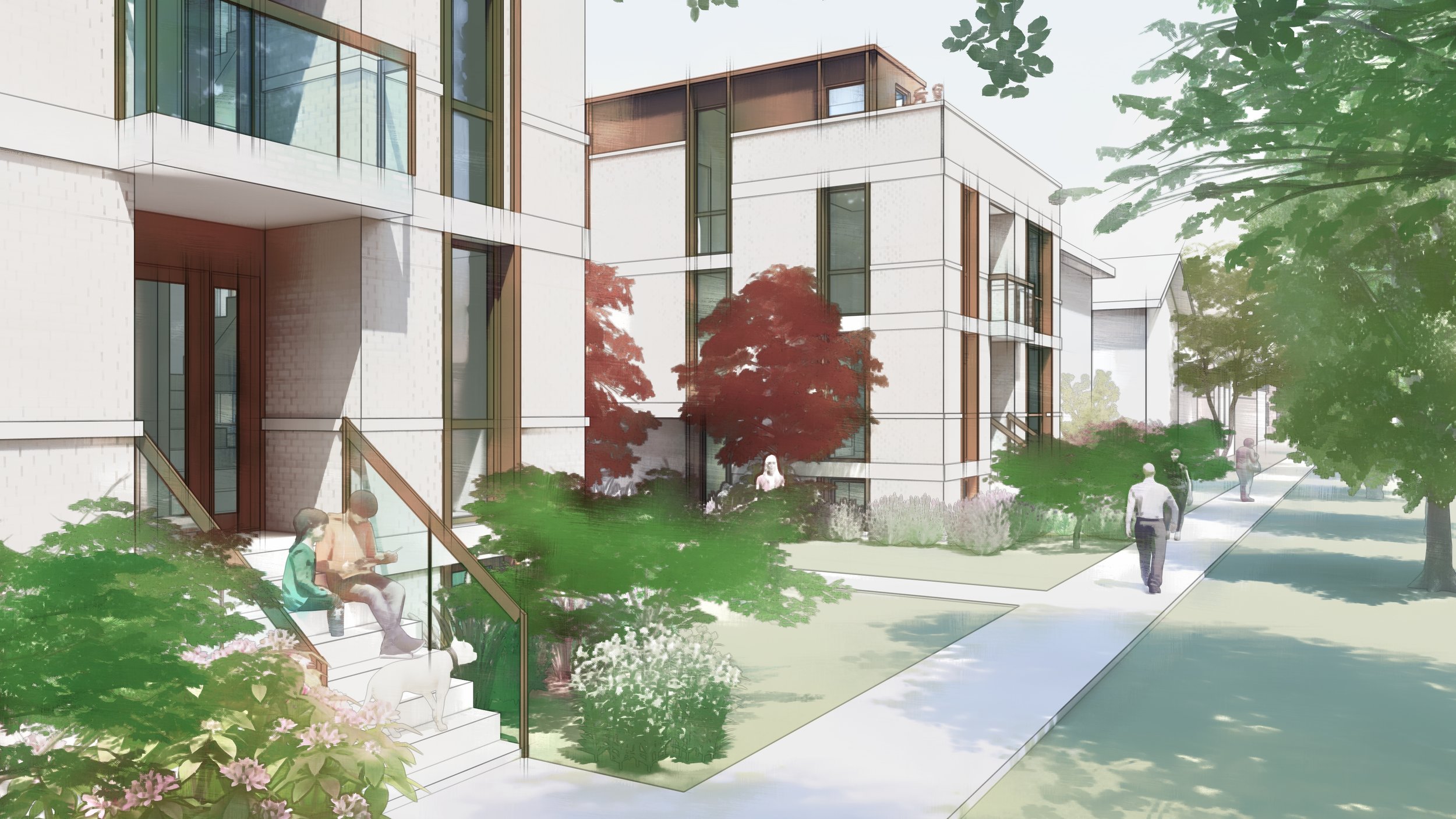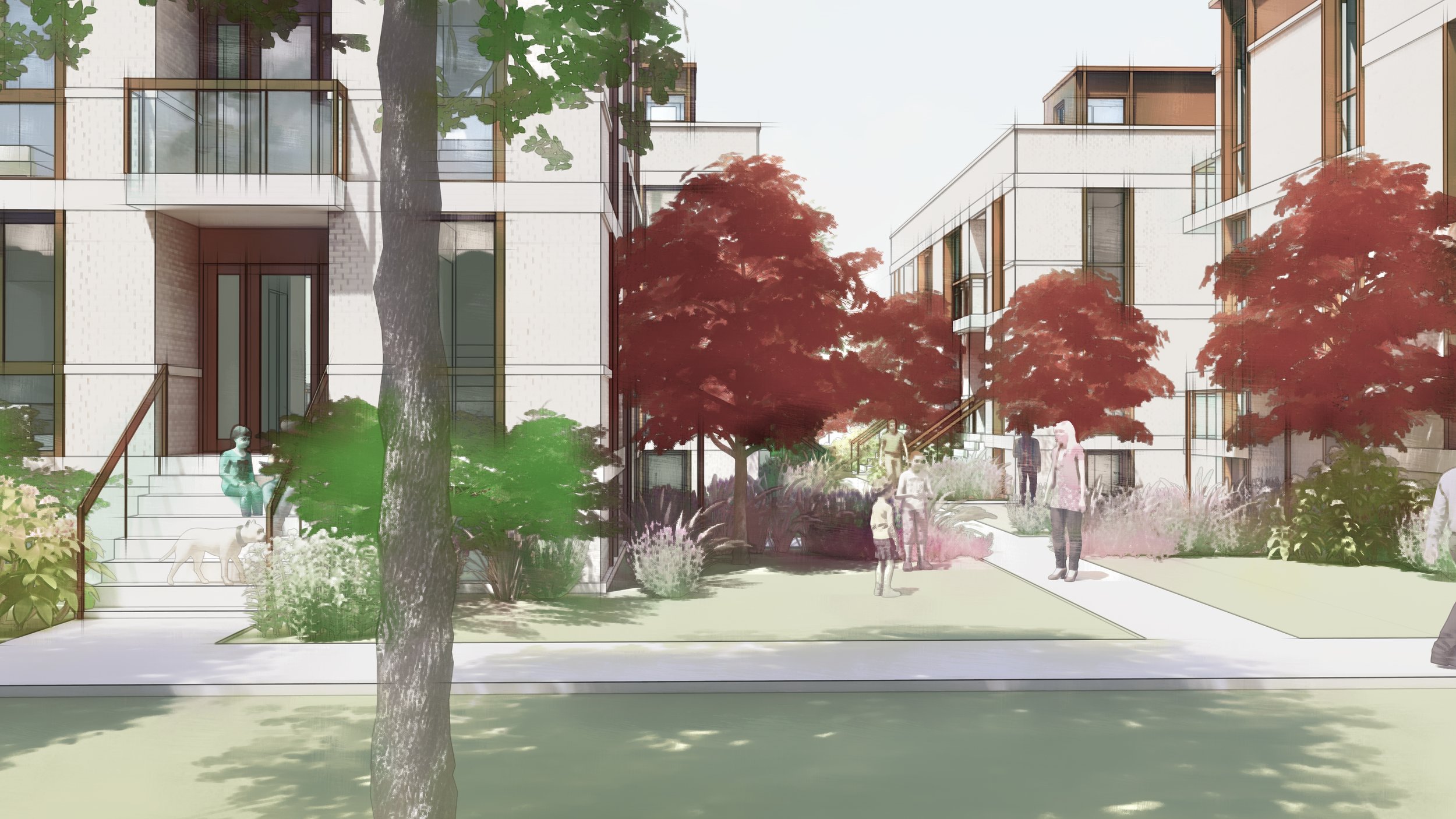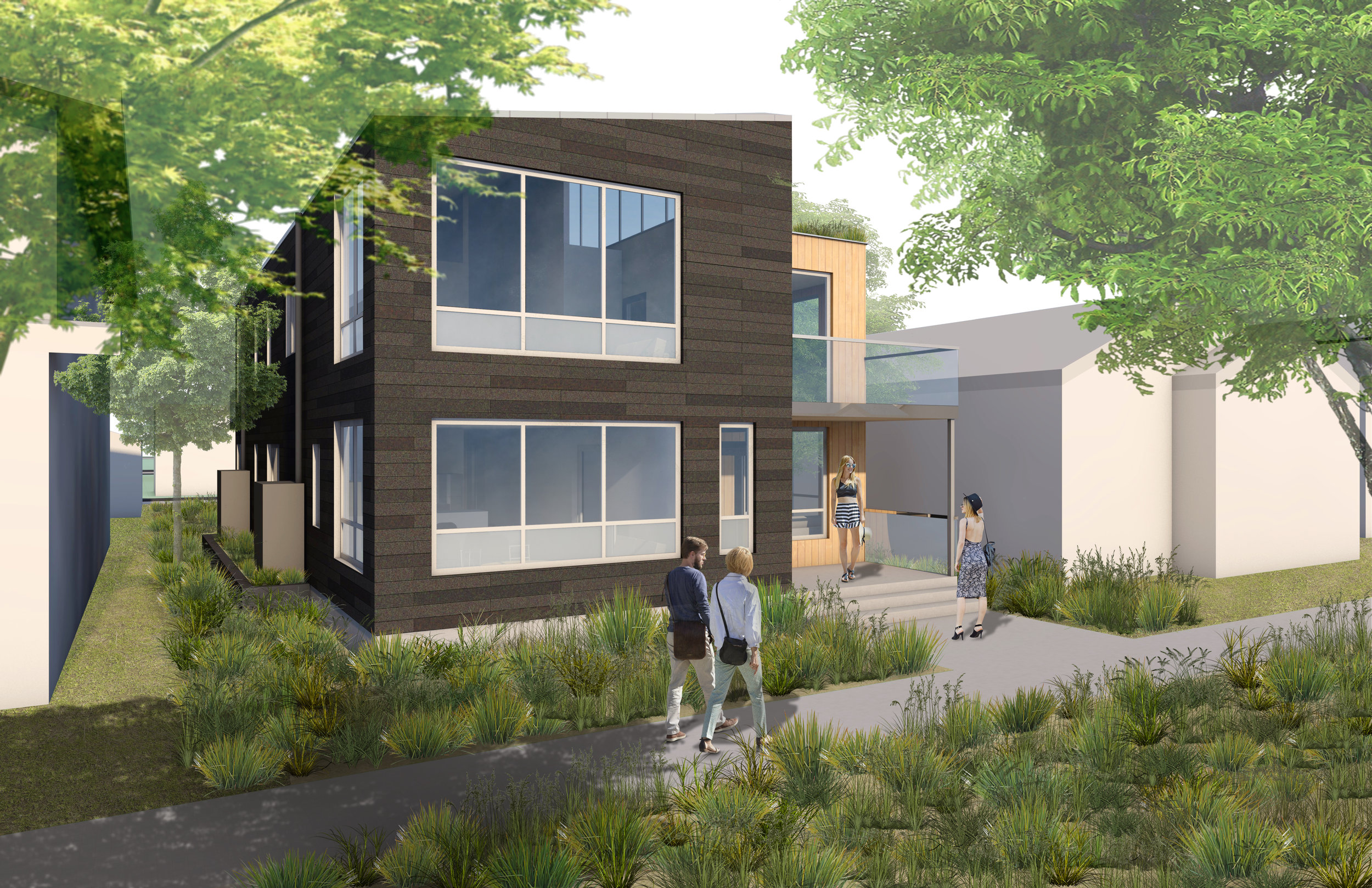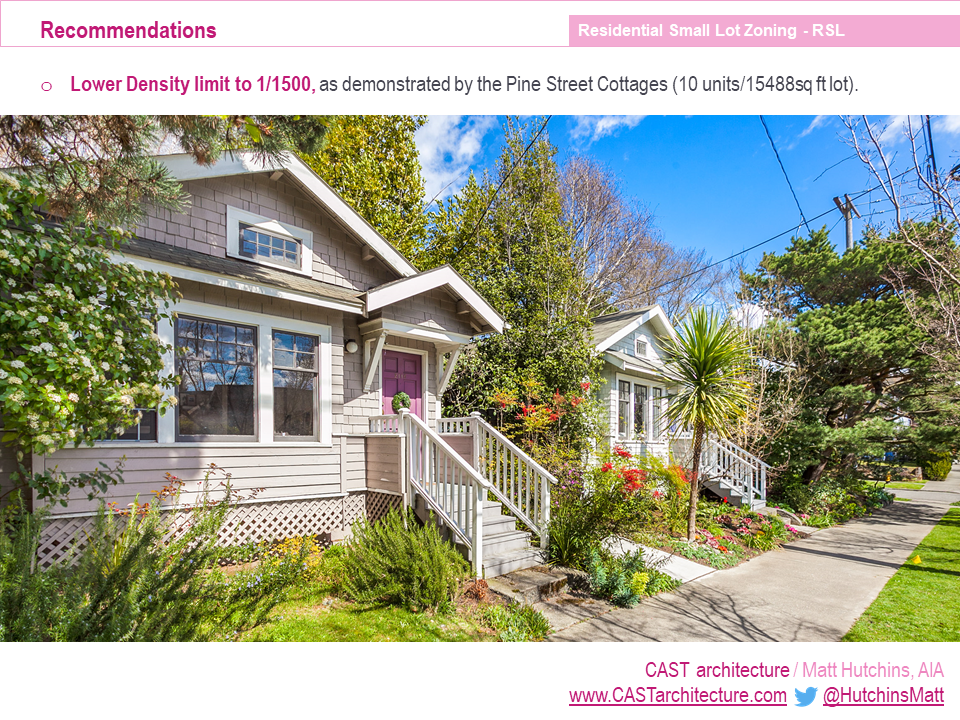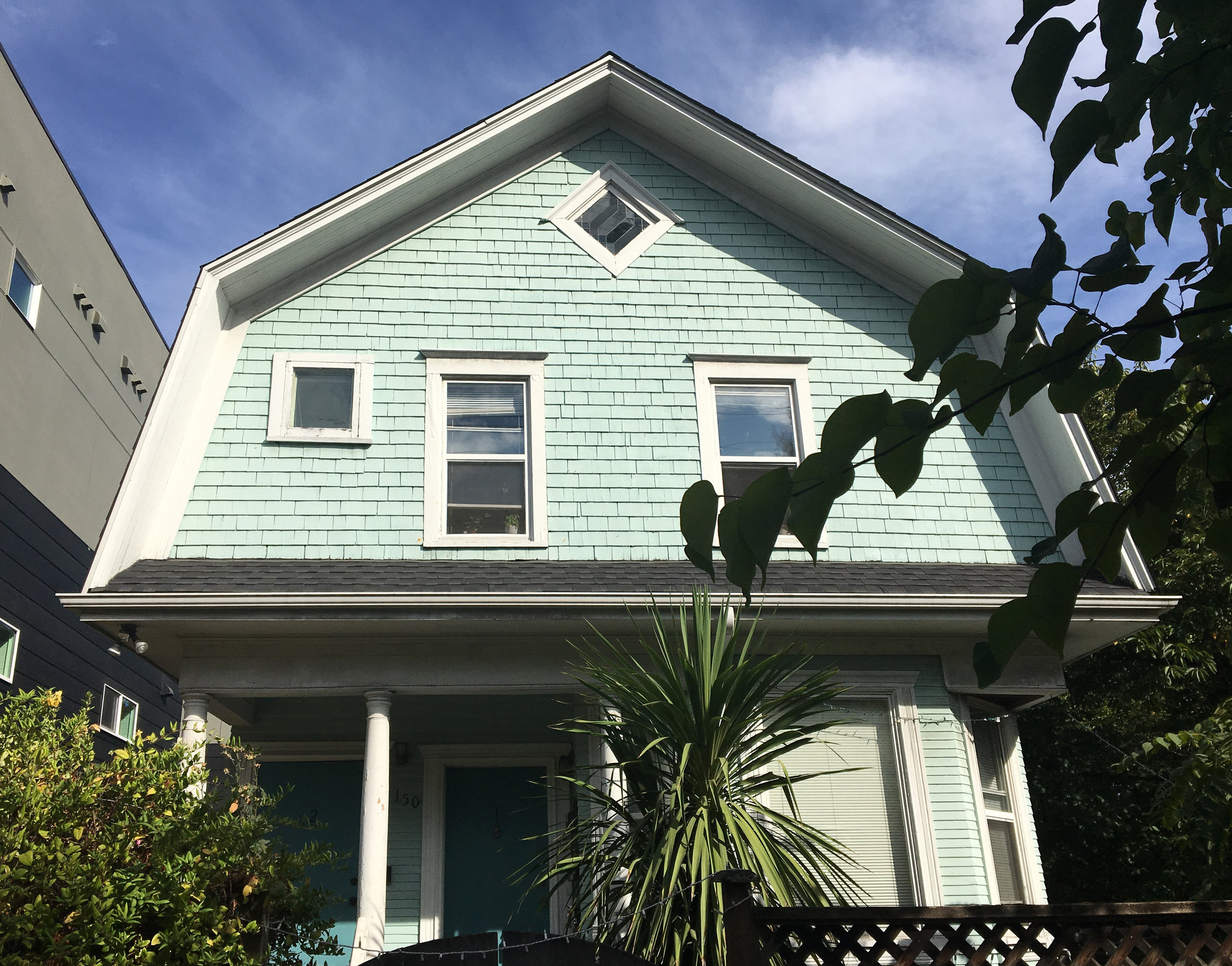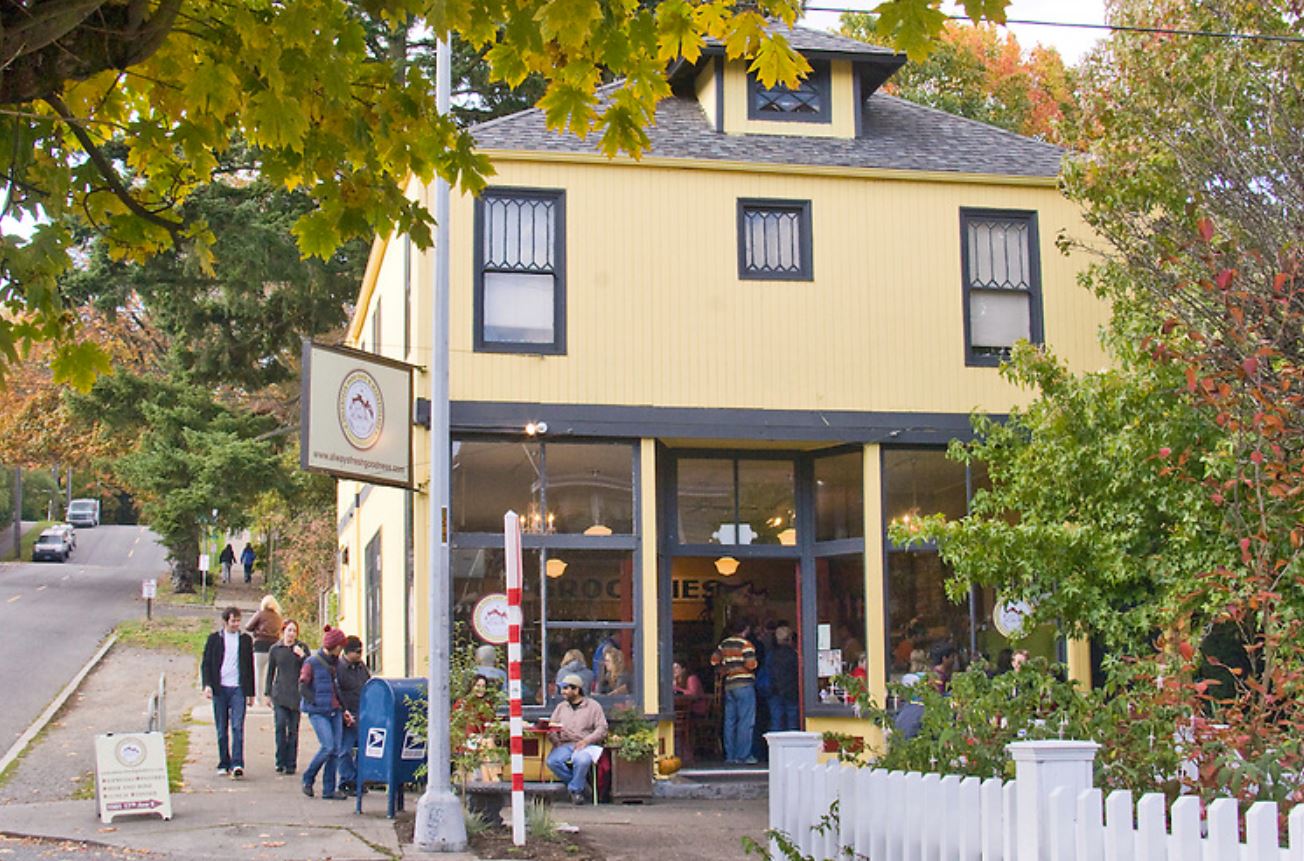In Seattle thousands of residential lots are now ‘Residential Small Lot’ (RSL) as part of the MHA zoning reform. The rules covering RSL have been rewritten, bringing questions about how RSL will affect Seattle neighborhoods.
First, what is RSL and what kinds of new development are we likely to see?
Second, how does RSL address displacement, affordability, density or sustainability?
If you live in one of the affected urban villages or are interested in innovative infill housing RSVP below to join Matt Hutchins, AIA for monthly informational talks in a neighborhood near you. All engagements are from 5:00 - 6:30pm.
September 25, 2019 Columbia City Library
October 16, 2019 West Seattle Library
November 12, 2019 Douglass-Truth Library (Central District)







